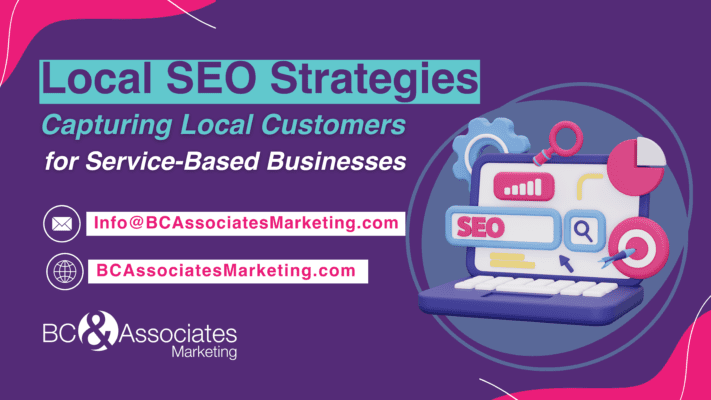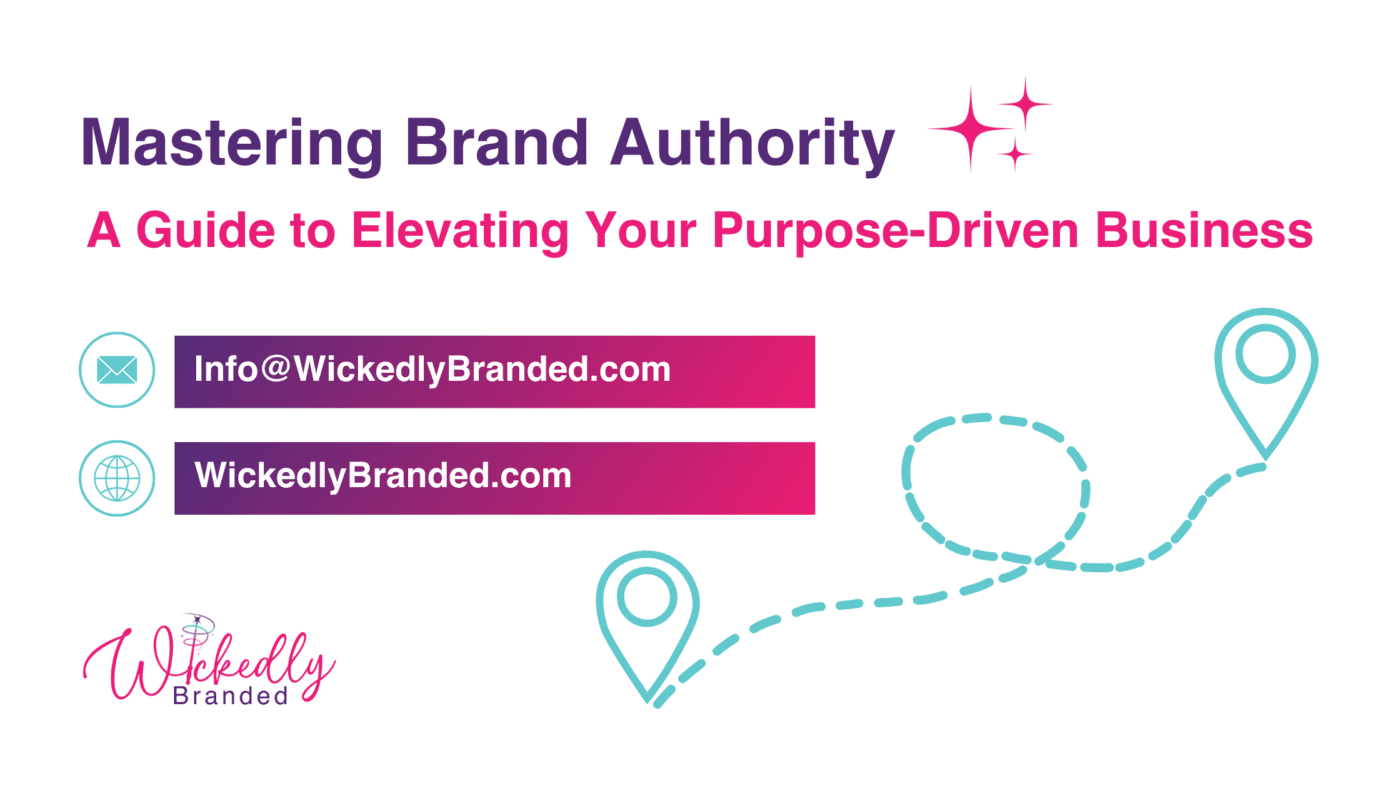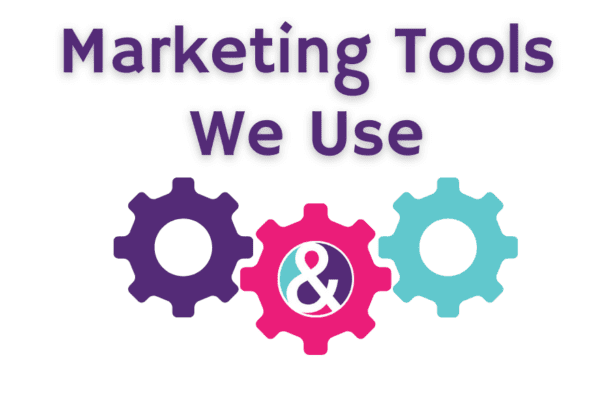Building a strong brand is crucial for any purpose-driven business to stand out in a crowded market. Elevating your purpose-driven business enhances recognition and customer loyalty and establishes your authority in your industry and community. This guide will explore the what, why, and how of elevating your small business brand, including some often overlooked yet critical insights.
What is Brand Authority?
Brand authority encompasses the trust, credibility, and expertise your business establishes within its industry and among its target audience. It goes beyond mere recognition and involves being acknowledged as a reputable and knowledgeable source in your field. Here’s a deeper look at what brand authority entails:
- Trust and Credibility: Brand authority is built on trust and credibility. It involves consistently delivering high-quality products or services, fulfilling promises, and maintaining transparent and ethical business practices that resonate with your audience.
- Expertise and Leadership: Establishing brand authority requires demonstrating expertise and leadership in your industry. This involves staying informed about industry trends, sharing valuable insights and knowledge, and solving your audience’s problems.
- Differentiation: Brand authority is about being known for something specific that sets you apart from competitors. Whether innovation, exceptional customer service, or unparalleled quality, your brand should be recognized for its unique strengths and capabilities.
- Reputation Management: Managing your brand’s reputation is crucial for building and maintaining authority. It involves actively monitoring and addressing feedback, reviews, and perceptions to ensure that your audience trusts and respects your brand.
- Consistency: Consistency is key to establishing and reinforcing brand authority. It involves delivering a consistent brand experience across all touchpoints, from marketing materials and customer interactions to product quality and brand messaging.
By cultivating trust, demonstrating expertise, differentiating yourself from competitors, and maintaining consistency, you can build a strong brand authority that elevates your purpose-driven business as a trusted leader in your industry.
Why is Building Brand Authority Important?
Building brand authority is essential for establishing credibility, trust, and influence within your industry. By positioning your business as a trusted source of expertise, you can gain a competitive edge, attract loyal customers, and unlock new growth opportunities. Here’s why building brand authority matters:
Customer Trust
- Trustworthy Reputation: A business recognized as an authority in its field is more likely to earn customers’ trust. Consumers who perceive your brand as knowledgeable and reliable feel more confident purchasing your products or services.
Competitive Edge
- Market Differentiation: Brand authority sets you apart from competitors by showcasing your expertise and authority in your niche. In a crowded marketplace, strong brand authority can make your business the preferred choice among consumers.
Increased Visibility
- Industry Recognition: Establishing brand authority increases your visibility and presence within your industry. As a recognized expert, you attract more attention from potential customers, partners, and collaborators, opening up new opportunities for growth and expansion.
Statistical Insight
- Consumer Behavior: According to a Nielsen report, 85% of consumers seek trusted expert content when purchasing. You can influence consumer behavior and drive sales by positioning your brand as an authority and providing valuable insights and expertise.
Building brand authority is a long-term investment that requires consistency, expertise, and a commitment to delivering value to your audience. By establishing trust, differentiating yourself from competitors, and increasing your visibility within your industry, you can strengthen your brand’s authority and position yourself as a leader in your field.
Best Practices for Building Brand Authority
Establish Expertise
Establishing your expertise is crucial to elevate your purpose-driven business brand and assert your authority in the industry. This can be achieved through thoughtful content creation and by gaining recognized certifications and awards. Here’s how to approach each of these elements:
Content Creation
Creating and disseminating high-quality content is one of the most effective ways to showcase your knowledge and expertise. Here are some strategies to maximize the impact of your content:
- Identify Key Topics: Use tools like Google Trends, Answer the Public, and industry forums to identify the questions and topics that are most relevant to your target audience. This ensures your content is both timely and sought-after.
- Diverse Formats: Don’t limit yourself to one type of content. Utilize a mix of blogs, whitepapers, and webinars to cater to your audience’s different preferences and learning styles. Each format serves a specific purpose:
- Blogs: Great for SEO and providing quick, insightful takes on current trends or how-to guides.
- Whitepapers: Offer in-depth analysis or comprehensive guides on industry-specific issues, demonstrating thorough knowledge and research.
- Webinars: Allow real-time interaction with your audience, helping to build a personal connection and immediate trust.
- Consistency is Key: Develop a content calendar to maintain a consistent posting schedule that keeps your audience engaged and helps establish a routine presence in their lives. Regular updates keep your brand top-of-mind and demonstrate an ongoing commitment to your field.
Certifications and Awards
Formal recognition from reputable institutions can significantly enhance your credibility:
- Industry Certifications: Obtain respected certifications within your industry. These serve as proof of your expertise and dedication to maintaining high standards. For instance, IT businesses could benefit from certifications like CompTIA or Cisco, while marketing firms might consider Google Analytics or HubSpot certification.
- Awards and Recognitions: Apply for industry awards that can testify to your excellence and superiority in your field. Winning or even being nominated for awards can be a powerful way to build trust and respectability.
- Showcase Achievements: Make sure that certifications and awards are prominently displayed on your website, in your office, and in your marketing materials. To maximize their visibility, they should also be celebrated through press releases and social media.
Leveraging Expertise
Once you have developed content and earned certifications, leverage them to enhance your business’s credibility:
- Expert Contributions: Offer guest posts on reputable industry blogs or publications. This will not only increase your visibility but also link your name with established and respected entities in your industry.
- Speaking Engagements: Seek opportunities to speak at industry conferences or participate in panel discussions. These platforms provide a great way to showcase your expertise to an engaged and relevant audience.
- Training and Workshops: Host workshops or training sessions to help others in your industry. This positions you as a leader who is not only an expert but also willing to share knowledge, further enhancing your authority.
You solidify your reputation as an industry expert by consistently producing valuable content and seeking formal recognition through certifications and awards. This strengthens your brand’s appeal and builds a level of trust and respect that can propel your purpose-driven business to new heights.
Leverage Social Proof
Social proof is a powerful tool for building trust and credibility in your brand. By showcasing positive feedback and real-life examples of your business’s success, you can reassure potential customers and establish your authority in the industry. Here are two effective ways to leverage social proof:
Customer Testimonials
Customer testimonials are like gold nuggets for your brand—they provide real-life evidence of your business’s value and reliability. Here’s how to make the most of them:
- Collect Feedback: Actively solicit feedback from satisfied customers through follow-up emails, surveys, or review requests. Make it easy for them to share their experiences and opinions.
- Highlight Positive Reviews: Showcase glowing reviews and testimonials prominently on your website, landing pages, and social media profiles. Use compelling visuals and quotes to capture attention and evoke trust.
- Video Testimonials: Consider incorporating video testimonials for added authenticity and engagement. Seeing and hearing real customers speak about their experiences can be incredibly persuasive for potential buyers.
Case Studies
Case studies offer a deeper dive into how your business has solved specific problems or met your clients’ needs. Here’s how to create compelling case studies:
- Select Compelling Stories: Choose relatable success stories that showcase your business’s unique value proposition. Highlight challenges faced, solutions provided, and measurable results achieved.
- Provide Detail and Evidence: Offer specific details and evidence to support your claims. Include statistics, testimonials, and before-and-after comparisons to illustrate the impact of your work.
- Share Across Platforms: To maximize visibility, publish case studies on your website, blog, and social media channels. Consider creating downloadable PDF versions that prospects can access easily.
Integration Tips
To make the most of social proof in your marketing efforts, consider the following integration tips:
- Strategic Placement: Strategically place testimonials and case studies throughout your website and marketing materials, especially on key landing pages and sales pages.
- Use in Ad Campaigns: To increase credibility and trust, incorporate snippets of customer testimonials or highlights from case studies into your advertising campaigns.
- Encourage User-Generated Content: Encourage satisfied customers to share their experiences on social media using branded hashtags or tagging your business. User-generated content can serve as powerful social proof.
- Monitor and Respond: Regularly monitor reviews and feedback across various platforms. Respond promptly to positive and negative feedback, demonstrating your commitment to customer satisfaction.
By effectively leveraging social proof, you can build trust, credibility, and authority in your brand, ultimately driving more conversions and customer loyalty.
Engage with the Community
Engaging with your local and online community is a powerful way to strengthen your brand’s presence and credibility. By actively participating in community events and fostering meaningful interactions on social media, you can build relationships, showcase your expertise, and demonstrate your commitment to serving your audience. Here are two key strategies for community engagement:
Community Involvement
- Participate in Local Events: Get involved in community events, festivals, and charity initiatives. Whether sponsoring a local sports team, volunteering at a food drive, or hosting a workshop, active participation demonstrates your commitment to the community and helps you build valuable connections.
- Sponsorship Opportunities: Consider sponsoring local events or organizations that align with your brand values and target audience. This raises your brand’s visibility and positions you as a supportive and engaged member of the community.
Social Media Engagement
- Regular Interaction: Use social media platforms to engage directly with your audience, industry peers, and thought leaders. Respond to comments, answer questions, and participate in discussions to foster meaningful connections and showcase your expertise.
- Content Sharing and Collaboration: Share valuable content from other industry experts and thought leaders and tag them in your posts. This provides additional value to your audience and helps you build relationships with influencers in your field.
- Create Polls and Surveys: Engage your audience by creating polls, surveys, or interactive Q&A sessions on social media. This encourages participation and provides valuable insights into customer preferences and interests.
Integration Tips
To maximize the impact of your community engagement efforts, consider the following integration tips:
- Consistent Brand Voice: Ensure that your interactions across all community channels—from local events to social media—align with your brand voice and values.
- Track and Measure Results: Use analytics tools to track the effectiveness of your community engagement efforts. Monitor metrics such as engagement rates, follower growth, and website traffic to gauge the impact of your activities.
- Collaborate with Influencers: Partner with local influencers or industry experts to co-host events, participate in joint campaigns, or share each other’s content. This can help you reach new audiences and enhance your credibility within the community.
- Seek Feedback and Input: Actively solicit feedback and input from your community members. Ask for suggestions on better serving their needs or improving your products and services.
By actively engaging with your offline and online community, you can strengthen your brand’s reputation, foster meaningful connections, and position yourself as a trusted authority in your industry.
Consistent Brand Messaging
Consistency is key in brand messaging—it helps to establish trust, build recognition, and reinforce your brand’s identity in the minds of your audience. Maintaining a unified brand voice and visual identity across all communications can create a cohesive brand experience that resonates with your target audience. Here’s how to ensure consistency in your brand messaging:
Unified Brand Voice
- Define Your Brand Voice: Define your brand’s personality and tone of voice. Is your brand playful and lighthearted, or more serious and professional? Consider the emotions you want to evoke and the values you want to communicate.
- Create Brand Messaging Guidelines: Develop clear guidelines for your brand messaging, including key messaging points, tone of voice, and language style. Ensure that these guidelines are communicated to all team members involved in creating content or interacting with customers.
- Consistency Across Channels: Whether it’s website copy, social media posts, email newsletters, or customer service interactions, strive for consistency in your brand voice across all communication channels. This helps to reinforce your brand identity and build trust with your audience.
Visual Identity
- Establish Brand Guidelines: Create comprehensive brand guidelines that outline your visual identity elements, including logos, colors, typography, and imagery style. These guidelines serve as a reference for maintaining consistency in your visual branding.
- Use Templates and Design Systems: Implement templates and design systems to ensure consistency in your marketing materials, such as social media graphics, email templates, and presentation decks. This streamlines the design process and maintains a cohesive look and feel.
- Quality Control: Regularly review your marketing materials to ensure they align with your brand guidelines. Check for consistency in colors, fonts, imagery, and overall design aesthetic. Consistent branding across all touchpoints enhances brand recognition and credibility.
Integration Tips
To integrate consistent brand messaging effectively, consider the following tips:
- Employee Training: Provide training and resources to educate your team members about your brand voice and visual identity guidelines. Ensure that everyone understands the importance of consistency in brand messaging.
- Feedback Mechanisms: Establish feedback mechanisms to gather input from team members and stakeholders on brand messaging initiatives. Encourage open communication and collaboration to refine and improve your brand messaging over time.
- Monitor and Adjust: Continuously monitor the effectiveness of your brand messaging efforts and be prepared to make adjustments as needed. Solicit feedback from customers and analyze performance metrics to identify areas for improvement.
By prioritizing consistency in your brand messaging, you can build trust, enhance brand recognition, and create a strong and cohesive brand identity that resonates with your audience.
Tools and Resources
Utilizing the right tools and resources can streamline your branding efforts and empower you to make informed decisions. From social media management to content analysis, these tools can enhance your brand’s visibility and effectiveness. Here are some essential tools and resources to consider for your branding strategy:
Metricool
- Social Media Management: Metricool provides robust tools for managing and scheduling social media content across multiple platforms. With features such as content calendar planning and analytics tracking, you can optimize your social media presence and engage with your audience more effectively.
Google Analytics
- Website Analytics: Google Analytics is a powerful tool for tracking website traffic, user behavior, and content performance. By gaining insights into your audience demographics, traffic sources, and conversion metrics, you can refine your marketing strategies and optimize your website for better results.
BuzzSumo
- Content Discovery and Analysis: BuzzSumo helps you discover trending topics, monitor competitor content, and track content performance across the web. By identifying popular content in your industry, you can tailor your content strategy to resonate with your target audience and drive engagement.
Check the Marketing Tools We Use at BC & Associates Marketing.
Integration Tips
To maximize the effectiveness of these tools and resources, consider the following integration tips:
- Data Integration: Integrate data from these tools into your overall branding strategy to gain a holistic view of your brand’s performance. Use insights from social media analytics, website traffic data, and content analysis to inform your branding decisions and optimize your marketing efforts.
- Regular Monitoring and Analysis: Set aside time to review the data and insights these tools provide. Monitor key performance indicators, track progress toward your branding goals, and identify areas for improvement. Use this information to refine your strategies and tactics over time.
- Continuous Learning and Adaptation: Stay updated on the latest trends and developments in branding and marketing technology. Explore new tools and resources to help you stay ahead of the curve and adapt to changes in consumer behavior and industry trends.
By effectively leveraging these tools and resources, you can elevate your purpose-driven business brand and build authority in your industry and community. Whether you’re optimizing your social media presence, refining your content strategy, or tracking website performance, these tools can empower you to achieve your branding goals and drive business growth.
Integration Tips
Successfully building brand authority requires strategic integration of your efforts across various aspects of your business. Here are some key integration tips to enhance your brand authority-building strategies:
Align Strategies with Business Goals
- Strategic Alignment: Ensure that your efforts to build brand authority are aligned with your broader business objectives and long-term goals. By aligning your branding efforts with your business strategy, you can maximize the impact of your initiatives and drive meaningful results.
Employee Advocacy
- Internal Brand Ambassadors: Encourage employees to become advocates for your brand by sharing and engaging with your content on their personal social media platforms. Employee advocacy can significantly amplify your brand’s reach and credibility and foster a sense of pride and ownership among your team members.
Feedback Loop
- Customer Insights: Establish a feedback loop to collect and analyze customer feedback regularly. Listen to your audience’s needs, preferences, and concerns, and use this valuable insight to refine and improve your brand authority-building strategies. Incorporating customer feedback ensures that your efforts are relevant, effective, and customer-centric.
Consistent Monitoring and Adaptation
- Continuous Evaluation: Regularly monitor the performance of your brand authority-building initiatives and adapt your strategies based on insights and feedback. Stay agile and responsive to market dynamics, industry trends, and customer preferences to maintain relevance and effectiveness.
By aligning your strategies with business goals, leveraging employee advocacy, establishing a feedback loop, and maintaining a commitment to continuous monitoring and adaptation, you can maximize the impact of your efforts to build brand authority and position your business as a trusted leader in your industry.
Overlooked Insights
Certain strategies and opportunities are often overlooked in the quest to build brand authority but can yield significant results. Here are some key insights that are frequently missed:
Local SEO
- Community Visibility: Don’t underestimate the power of local search engine optimization (SEO) to boost your visibility within your community. Optimize your online presence with local keywords, Google My Business listings, and location-specific content to attract customers in your area. By appearing prominently in local search results, you can enhance your brand’s visibility and attract more local customers.
Read our blog on Local SEO Strategies for Service-Based Businesses.

Industry Partnerships
- Collaborative Opportunities: Forge partnerships with non-competitive businesses in your industry to create synergistic opportunities. Consider co-creating content, such as guest blog posts, joint webinars, or co-hosting events or workshops. Collaborating with complementary businesses expands your reach and enhances your credibility and authority within your industry.
Post-Purchase Engagement
- Customer Advocacy: Don’t overlook the importance of post-purchase engagement in fostering long-term customer relationships. Continue to engage with customers after they purchase by providing follow-up advice, support, and personalized recommendations. By nurturing ongoing relationships with customers, you can turn them into loyal advocates who are more likely to recommend your brand to others and become repeat buyers.
By leveraging overlooked insights such as local SEO optimization, industry partnerships, and post-purchase engagement, you can uncover new opportunities to enhance your brand authority and strengthen your position in the market. Don’t overlook these valuable strategies to build a trusted and influential brand.
Conclusion
Elevating your purpose-driven business brand and building authority requires a strategic blend of expertise, engagement, and consistent branding. By following these best practices and integrating innovative tools and approaches, your purpose-driven business can establish itself as a leading authority in your industry and community, attracting more customers and opportunities for growth. Remember, brand authority is not built overnight but through persistent and consistent effort that resonates with your audience and reflects your business values.
P.S. Ready to spark your unique opportunities and ignite your marketing? Here are three ways to work with us:
📞 Schedule a Complimentary 15-minute Call and let’s delve into your goals and answer any questions you may have.
📘 Read Beverly’s book Marketing For Entrepreneurs, filled with actionable steps to help make your brand and business shine even brighter.
🎙️ Or listen to Beverly’s Podcast to get inspired and gain new business and marketing insights.
🎓 Enroll in Our Courses designed to bring clarity to your business efforts. They’re easy-to-understand and self-paced, perfect for busy entrepreneurs like you.



